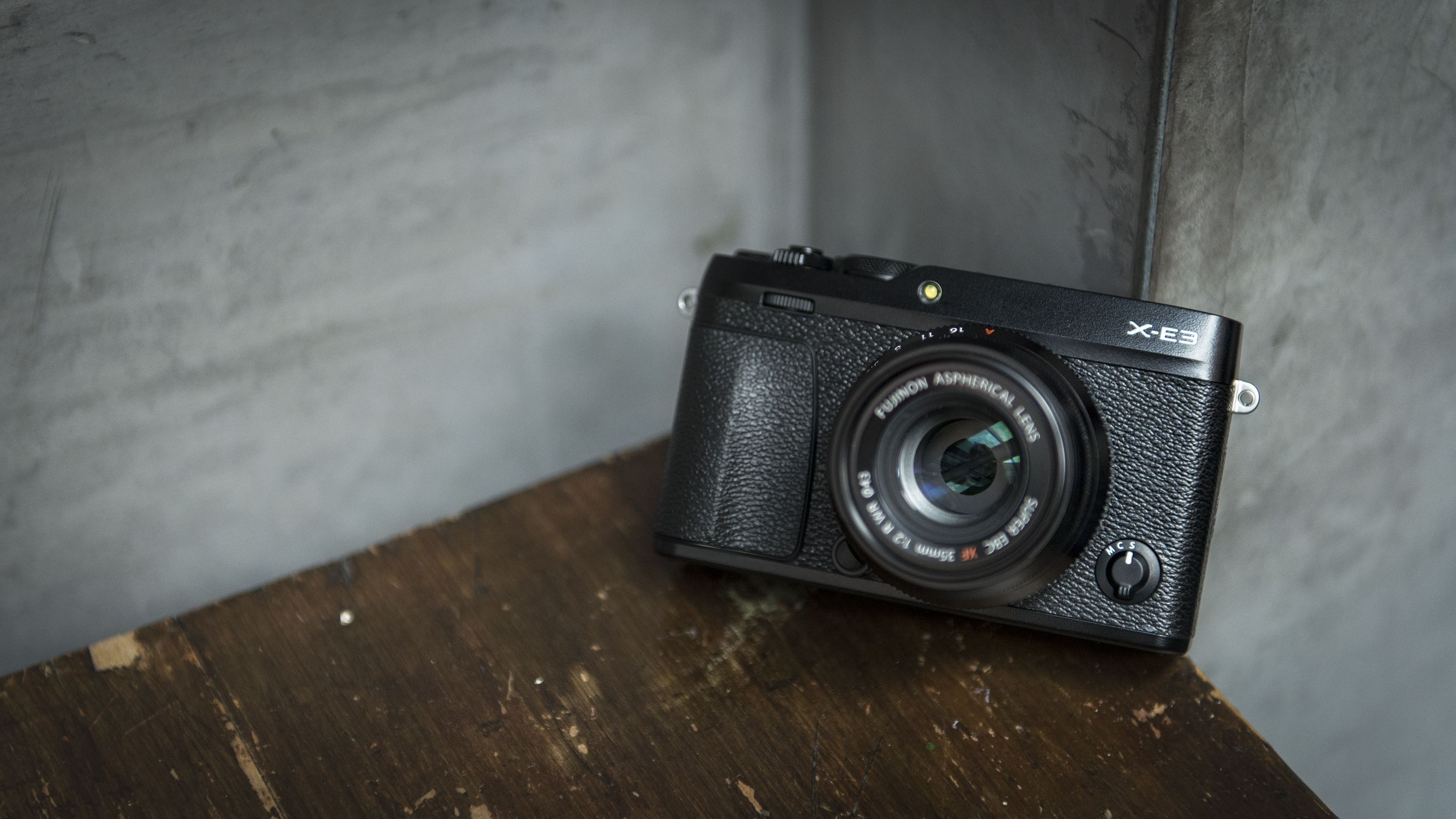TechRadar Verdict
Fujifilm might have shrunk the camera, but it hasn't sacrificed performance. The X-E3 is everything you'd want in a compact-sized mirrorless camera.
Pros
- +
Rich and detailed images
- +
Tactile controls
- +
Refined handling
- +
Decent AF system
- +
Film simulation modes
Cons
- -
Limited touchscreen control
- -
Battery life could be better
- -
Fixed display
Why you can trust TechRadar
The X-E3 is the latest X Series mirrorless camera from Fujifilm to get the company's 24.3MP X-Trans CMOS III sensor, and replaces the ageing X-E2S.
While the likes of the X-T2 and X-T20 take on a DSLR-style design, with a raised, central viewfinder, the X-E3 follows the model of a classic rangefinder-style camera in a similar vein to the X-Pro2.
Whereas the X-Pro2 is aimed at professionals and keen enthusiasts, the X-E3 has been designed to appeal to a slightly broader audience, with more diminutive proportions and streamlined controls.
The specification hasn't been compromised to achieve this, however, with the X-E3 sharing an almost identical set of features with the X-T20, along with a few tricks of its own.
Features
- APS-C X-Trans CMOS III sensor, 24.3MP
- 3.0-inch touchscreen, 1,040,000 dots
- 4K video capture
As we've seen with every Fujifilm X Series camera since the X-Pro2, the X-E3 features the company's 24.3MP X-Trans CMOS III APS-C sensor, which delivers a decent boost in resolution over the X-E2S’s 16.3MP sensor.
This also means it gets a moderate increase in ISO range over its predecessor, with a native sensitivity range of ISO200-12,800 (compared to ISO6400 on the X-E2S), while the expanded range now runs to ISO100-51,200. And where the X-E2S was restricted to JPEG-only files at the extended range, the X-E3 supports raw files as well.



Like the X-E2S (and the X-T20 for that matter), the Fujifilm X-E3 features a high-resolution 2.36 million-dot OLED electronic viewfinder (EVF) with a 0.62x magnification, while the rear of the camera is furnished with a 3.0-inch touchscreen display with a resolution of 1,040,000 dots.
Sign up for breaking news, reviews, opinion, top tech deals, and more.
Unlike both the X-T2 and X-T20, the X-E3 forgoes a tilt-angle display in favor of a flush-fitting design. The touchscreen functionality builds on the system seen on the X-T20 however, offering a greater depth of control. As on the X-T20, then, you can tap the display to acquire focus and trigger the shutter, as well as being able to swipe through and pinch-to-zoom when reviewing images.
There's still no direct control for navigating the menus, but the X-E3 does let you use flicking motions to activate pre-assigned functions, while you can also adjust settings in the Quick menu.
The touchscreen functionality builds on the system seen on the X-T20, offering even a greater depth of control
As we've seen with other X Series cameras, there's Wi-Fi and NFC connectivity, but a first for the range is Bluetooth. Once you've paired the camera with your smart device and downloaded the accompanying Fujifilm Camera Remote app you should be able to easily transfer your images seamlessly, to share on social media.
The X-E3 also offers 4K video capture (3840 x 2160) at 30p as well as Full HD (1920 x 1080) at 60p, with both formats supporting film simulations. There’s a 2.5mm jack input for a microphone, but not for audio monitoring.
Finally, there’s just a single SD card slot on the X-E3, and the camera doesn’t support the faster UHS-II cards.

Phil Hall is an experienced writer and editor having worked on some of the largest photography magazines in the UK, and now edit the photography channel of TechRadar, the UK's biggest tech website and one of the largest in the world. He has also worked on numerous commercial projects, including working with manufacturers like Nikon and Fujifilm on bespoke printed and online camera guides, as well as writing technique blogs and copy for the John Lewis Technology guide.
